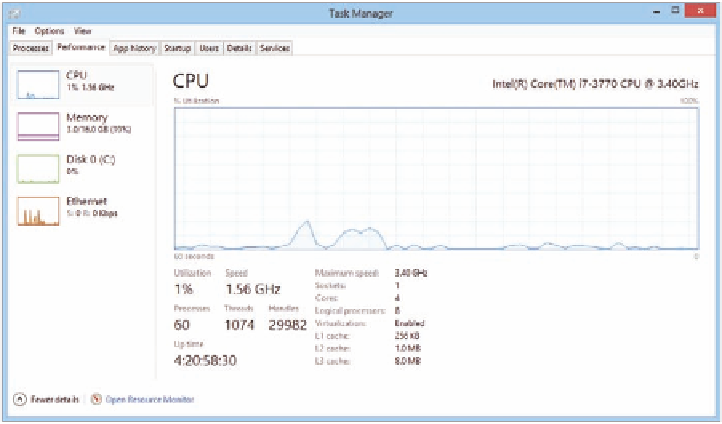Database Reference
In-Depth Information
In the early 1990s, several vendors developed special-purpose DBMS products for stor-
ing object data. These products, which were called
object-oriented DBMSs (OODBMSs)
,
never achieved commercial success. The problem was that by the time they were introduced,
billions of bytes of data were already stored in relational DBMS format, and no organization
wanted to convert their data to OODBMS format to be able to use an OODBMS. Consequently,
such products failed in the marketplace.
However, the need for object persistence did not disappear. Some vendors, most notably
Oracle, added features and functions to their relational database DBMS products to create
object-relational databases
. These features and functions are basically add-ons to a rela-
tional DBMS that facilitate object persistence. With these features, object data can be stored
more readily than with a purely relational database. However, an object-relational database
can still process relational data at the same time.
7
Although OODBMSs have not achieved commercial success, OOP is here to stay, and
modern programming languages are object-based. This is important because these are the
programming languages that are being used to create the latest technologies that are dealing
with Big Data.
One major development in computing occurred when systems administrators realized that
the hardware resources (CPU, memory, input/output from/to disk storage) were very under-
utilized. For example, as shown in Figure 12-28, most of the time the CPU is not busy, and there
may be a lot of available memory not being used by the CPU for application processing.
This realization led to the idea of sharing the hardware resources with more than one
computer. But how could that possibly be done—how can more than one computer share
hardware resources?
The answer was to have one physical computer host one or more
virtual computers
,
more commonly known as
virtual machines
. To do this, the actual computer hardware, now
called the
host machine
, runs an application program known as a
virtual machine man-
ager
or
hypervisor
. The hypervisor creates and manages the virtual machines and controls
the interaction between the virtual machine and the physical hardware.
8
For example, if a
Figure 12-28
The Underutilization of
Computer Resources
Although there are
utilization spikes, the
CPU is averaging
only 1% use
Although there may
be utilization spikes,
only 19% of the
available main memory
is being used
CPU utilization spikes
7
To learn more about object-relational databases, see the Wikipedia article at
http://en.wikipedia.org/wiki/
8
For more information on computer virtualization, see the Wikipedia article on virtualization at
http://










Search WWH ::

Custom Search